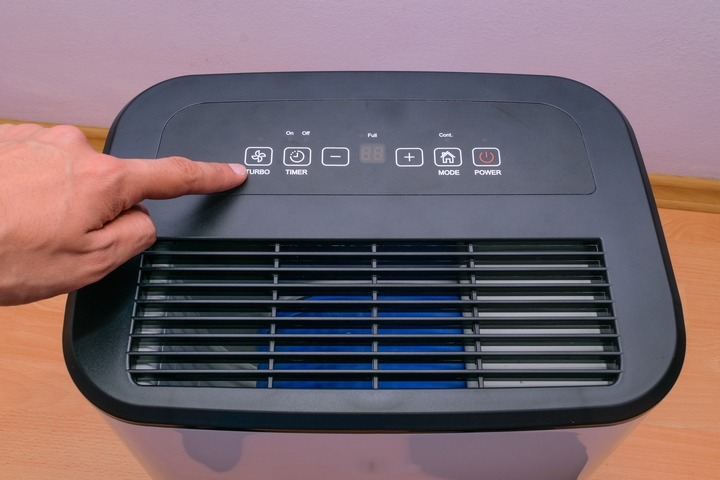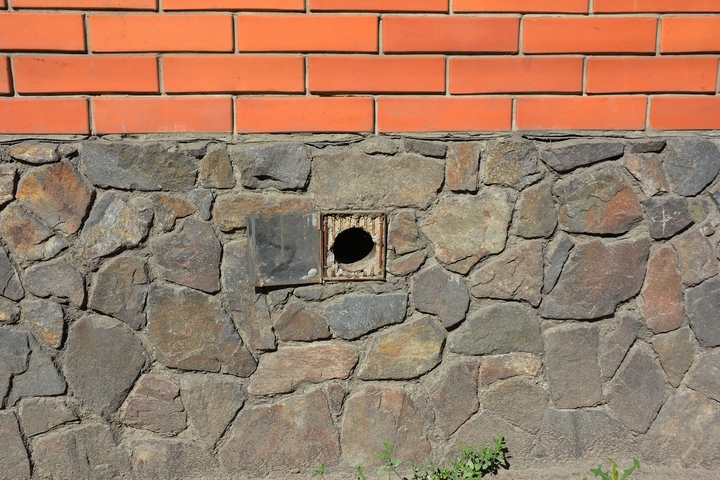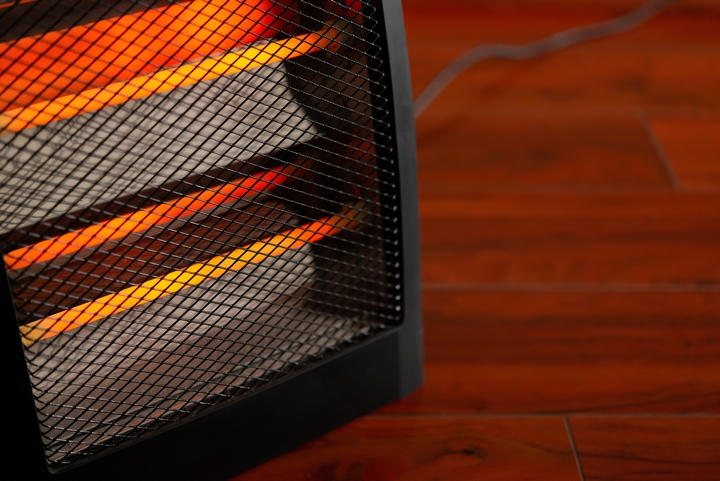Basements are great. Whether you are using the basement in your home for storage, as family play area, as a famous ‘man cave,’ or as a living area, the extra subterranean space can really come in handy. In recent years, renting out space in basements as apartments has become a preferred means for homeowners to generate extra income.
Many city governments are actively promoting the idea of laneway apartments, grandmother suites and basement apartments using basement space. This makes basement climate control all the more important. Unfortunately, basements can be damp and cold, especially in the cool of the winter months.
Basements are cold because they are located below ground. Hot air rises, leaving a vacuum below. The ground holds onto moisture and avoids the heat of the sun. In the famous and sunny opal mining Australian town of Coober Pedy where summer temperatures soar into triple digits, residents have made a habit of “digging in” and building everything they need underground. In basements, the price of the cool air underground is moisture, which makes the air feel even cooler.
Add a laundry room to the situation, and the added moisture from the washing machine and potentially poor ventilation from the dryer vent further exacerbate the problem.
There are a number of winning strategies for heating a cold basement. Recent advances in climate control technology have made regulating subterranean spaces like basements easier to manage and more affordable. This list highlights some preferred methods on how to heat up a cold basement. The methods discussed include cost-effective simple fixes (life hacks) as well as more advanced professional solutions.
1. Fix any leaks
 This may seem an obvious way on how to heat up a cold basement. If water and the dampness of subterranean air is the main culprit, the first steps toward addressing a cold basement should look to do something about that. Fix any water leaks and remove any place water or moisture might be building up in your basement.
This may seem an obvious way on how to heat up a cold basement. If water and the dampness of subterranean air is the main culprit, the first steps toward addressing a cold basement should look to do something about that. Fix any water leaks and remove any place water or moisture might be building up in your basement.
2. Dehumidify
 Dehumidifiers are readily commercially available at hardware stores, big box retailers, and online. They require some observation, as you need to work out a way to drain some models. They also will consume electricity, so look for a model that is well rate for energy usage.
Dehumidifiers are readily commercially available at hardware stores, big box retailers, and online. They require some observation, as you need to work out a way to drain some models. They also will consume electricity, so look for a model that is well rate for energy usage.
3. Insulate
 Insulate basement walls to cut draughts. Insulation can also help with basements that have cool rock, stone or brick walls. Insulate plumbing and ductwork to prevent heat loss, unwanted air flow, and keep conditions dry. Proper insulation will also save money on heating costs and furnace repairs.
Insulate basement walls to cut draughts. Insulation can also help with basements that have cool rock, stone or brick walls. Insulate plumbing and ductwork to prevent heat loss, unwanted air flow, and keep conditions dry. Proper insulation will also save money on heating costs and furnace repairs.
4. Ventilate
 For basement bath and laundry rooms, install a well-sealed bathroom fan and a suitable ventilation system for a clothes dryer. This will get moisture out and help regulate temperature. Check any existing ventilation and make sure it is properly insulated. Proper ventilation can also help with air circulation, which will more evenly distribute heat around the whole of the basement. You can also add a heating vent to bring hot air from a central heating system to the basement.
For basement bath and laundry rooms, install a well-sealed bathroom fan and a suitable ventilation system for a clothes dryer. This will get moisture out and help regulate temperature. Check any existing ventilation and make sure it is properly insulated. Proper ventilation can also help with air circulation, which will more evenly distribute heat around the whole of the basement. You can also add a heating vent to bring hot air from a central heating system to the basement.
5. Seal air leaks
 Locate any source of cool draughts and seal it. Inspect dryer ventilation, door frames, windows, and look for any gaps that are letting cold air in. Seal any basement window frames from the outside with caulk. You might also purchase an insulation kit to winterize your windows inside. Some might elect to put layers plastic as cheap insulation to keep cool air out. Sealing floors with an epoxy floor coating or paint will block air flow and cut moisture levels.
Locate any source of cool draughts and seal it. Inspect dryer ventilation, door frames, windows, and look for any gaps that are letting cold air in. Seal any basement window frames from the outside with caulk. You might also purchase an insulation kit to winterize your windows inside. Some might elect to put layers plastic as cheap insulation to keep cool air out. Sealing floors with an epoxy floor coating or paint will block air flow and cut moisture levels.
6. Replace old windows
 Old single pane basement windows allow warm air out and let cool air settle in your basement. New multi-pane windows are rated for their energy efficiency, referring to their ability to prevent heat loss.
Old single pane basement windows allow warm air out and let cool air settle in your basement. New multi-pane windows are rated for their energy efficiency, referring to their ability to prevent heat loss.
7. Carpet floors
 The tile, cement or unfinished surfaces in many basements can benefit from carpeting or large rugs. Carpeting is not recommended for basements that are prone to moisture or water leaks. Rugs lined with rubber mats can help for laundry rooms, shops or storage areas. For all flooring, try to use flooring materials that will help you retain heat and resist freezing.
The tile, cement or unfinished surfaces in many basements can benefit from carpeting or large rugs. Carpeting is not recommended for basements that are prone to moisture or water leaks. Rugs lined with rubber mats can help for laundry rooms, shops or storage areas. For all flooring, try to use flooring materials that will help you retain heat and resist freezing.
8. Space heaters
 Space heaters are a great temporary fix. There are no installation costs and they can be moved to provide the best results. They are most effective for small spaces for short periods of time, as many space heaters can be fire hazards, especially if the units are left on for extended periods of time. Perceived advantages of space heaters should be weighed against the energy costs of operating them.
Space heaters are a great temporary fix. There are no installation costs and they can be moved to provide the best results. They are most effective for small spaces for short periods of time, as many space heaters can be fire hazards, especially if the units are left on for extended periods of time. Perceived advantages of space heaters should be weighed against the energy costs of operating them.
9. Artificial fireplaces
 artificial fireplaces are actually great ways on how to heat up a cold basement. These are basically decorative space heaters and carry all of the same advantages and disadvantages with the added bonus of (sometimes) looking great.
artificial fireplaces are actually great ways on how to heat up a cold basement. These are basically decorative space heaters and carry all of the same advantages and disadvantages with the added bonus of (sometimes) looking great.
10. Old fashioned stoves and fireplaces
 My grandmother heated her unfinished urban basement using a very old cast iron wood-burning stove. This dated to a period when there was still coal delivery in many cities. She’d throw everything in there—wood, newspaper, cigarettes, and much more!
My grandmother heated her unfinished urban basement using a very old cast iron wood-burning stove. This dated to a period when there was still coal delivery in many cities. She’d throw everything in there—wood, newspaper, cigarettes, and much more!
Today, many municipalities have laws against stoves and even fireplaces (city officials made my grandmother remove her stove in the early 1990s). Stoves and fireplaces are seen as a fire hazard and the harmful effects of smoke, carbon monoxide and toxic elements. Both also require considerable maintenance and installation. However, both effectively heat closed areas quickly.
11. Professionally installed heating systems
 There are a number of more elaborate heating options whose installation will exceed the skill level of most self-taught handy men and women. Many climate professionals offer free consultations for homeowners with on-site evaluations that can be useful to outline specific options for a given basement space. There are climate control systems that use elaborate duct work and can trap air and effectively circulate air.
There are a number of more elaborate heating options whose installation will exceed the skill level of most self-taught handy men and women. Many climate professionals offer free consultations for homeowners with on-site evaluations that can be useful to outline specific options for a given basement space. There are climate control systems that use elaborate duct work and can trap air and effectively circulate air.
Premium radiant heating systems use heating from under the flooring to keep an entire area warm. Baseboard heaters are a popular lower cost option. Coordinated with an energy-smart thermostat, baseboard heating can be more eco-friendly and less expensive. Baseboard heating works similarly to space heaters, but on a larger scale with many of the same limitations.




